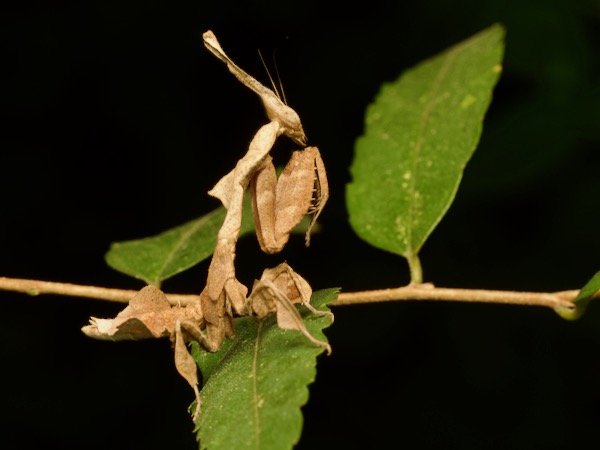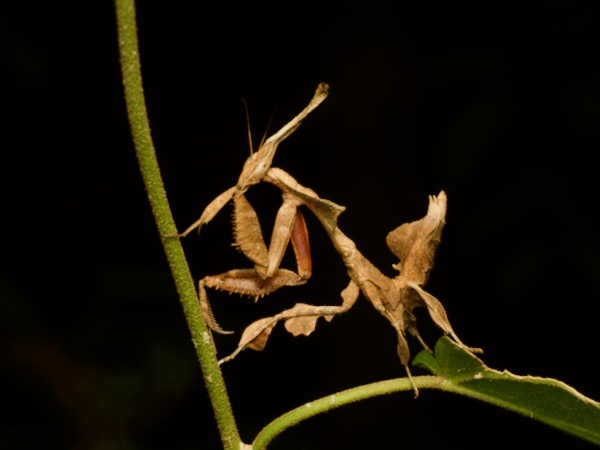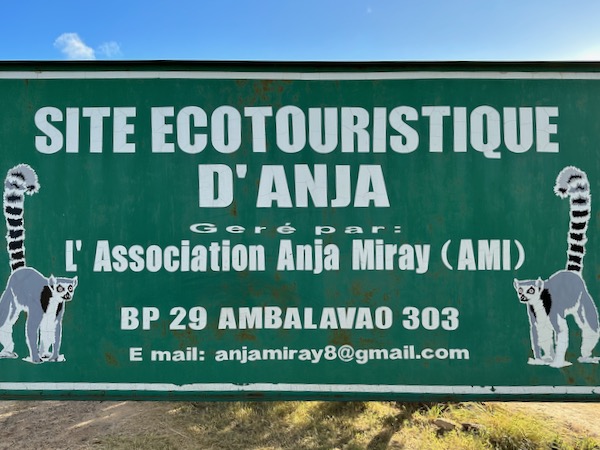
Anja Community Reserve is a small protected area of dry forest, a freshwater lake, and massive granite formations that is managed by the local community rather than the government. It's just off Madagascar's main north/south road so it's relatively easy to access. A good-sized population of Ring-tailed Lemurs can easily be seen there, so it's a popular spot for tourists. We had stopped there for an afternoon on my 2007 trip, but this time we were to stay in a simple tourist lodge for two nights. (The lodge didn't exist on my previous visit.)
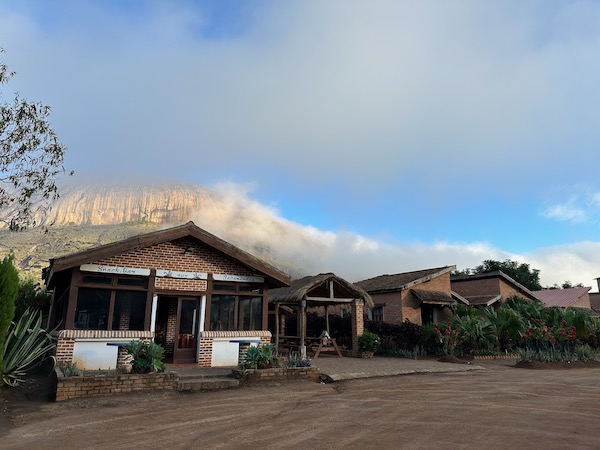
Here's the little tourist lodge. The building on the left is the restaurant and general meeting place. The guest rooms are to the right.

Looking in the other direction, here's the view of the reserve itself from the lodge. At 74 acres, the protected area is not large, but it is home to at least three endemic lizard species (spoiler alert).
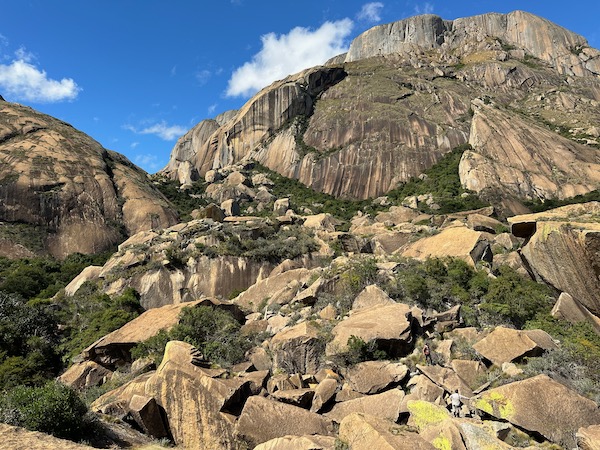
Same rock formation, later in the day and a little closer. The teeny tiny humans near the bottom right of this photo are José and Frank.
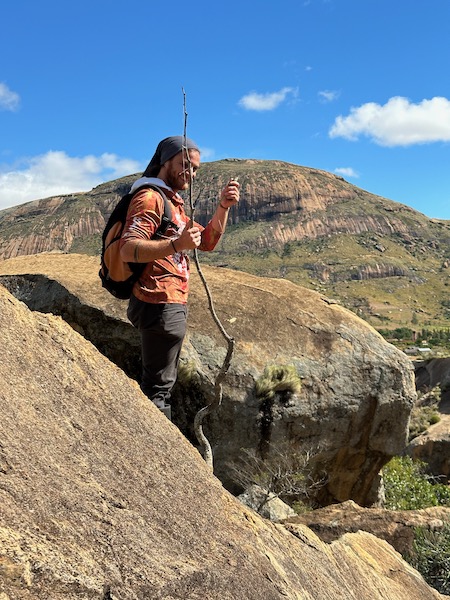
José and a briefly detained Oplurus friend
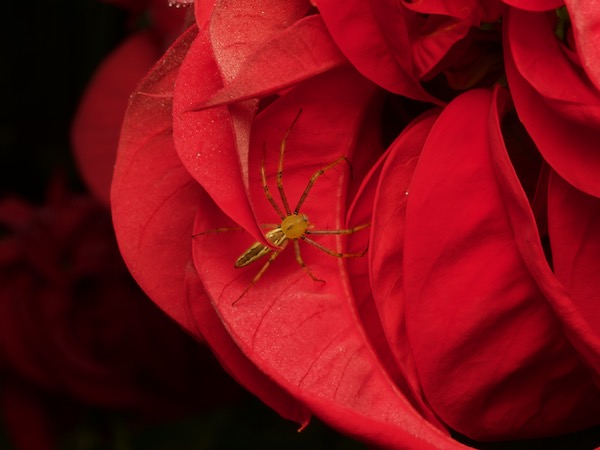
Madagascar Green Lynx Spider, Peucetia lucasi
I wish I could say that this was a wild flower rather than a cultivated one, but I cannot. The spider didn't seem to care.
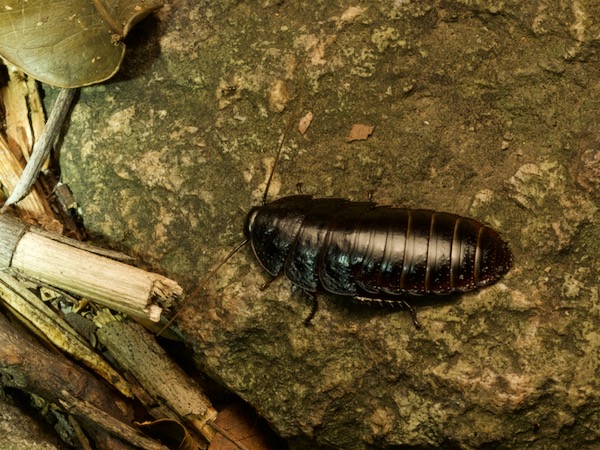
Aeluropoda insignis
Just one of Madagascar's many fine cockroach species. Who doesn't love a cockroach? (Don't answer that.)
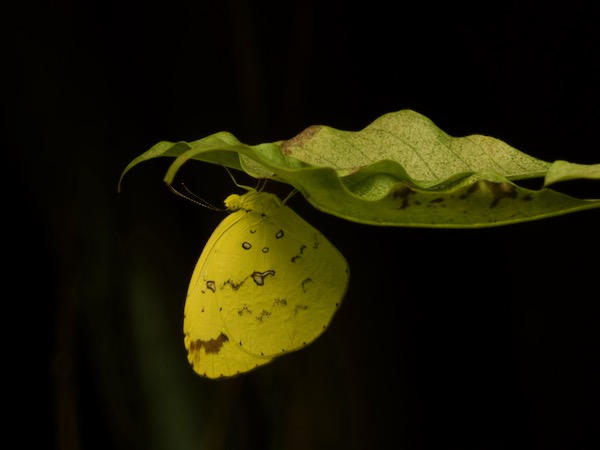
Malagasy Grass Yellow, Eurema floricola

Malagasy Wood White, Leptosia alcesta sylvicola
I confess that I made up this common name. The species L. alcesta has two English names, one of which is "African Wood White. This subspecies, L. a. sylvicola, is present only in Madagascar, so "Malagasy Wood White" seems like a reasonable name. On the other hand, the second English name for L. alcesta listed on Wikipedia is "Flip Flop", so I could have gone with "Malagasy Flip Flop". I totally should have.
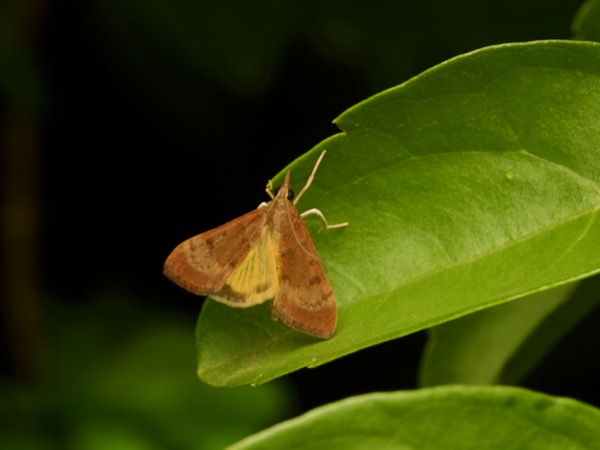
Wandering Sunset, Uresiphita gilvata
Now that is an evocative English name! Much better than "Malagasy Flip Flop".
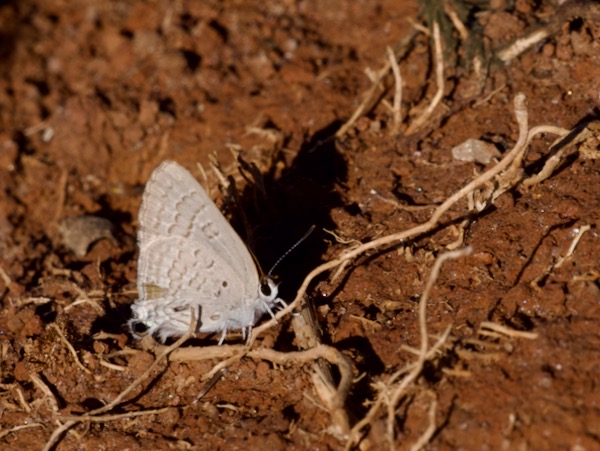
Cupreous Hairtail, Anthene princeps
This isn't really one of my better Malagasy butterfly photos but I couldn't resist including it here because of the English name, which sounds like either a Harry Potter potion or a schoolyard insult.
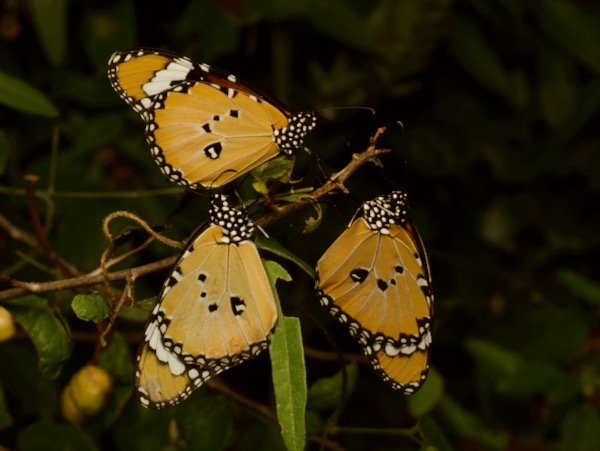
Plain Tiger Butterfly, Danaus chrysippus
Where I live in California, Monarch butterflies (Danaus plexippus) cluster by the thousands over the winter. This close relative, widespread from Africa to Indonesia, was clustering in the twos and threes in this location. Rainer says that they can be found clustering in the hundreds at Tsingy de Bemaraha on the west coast. I hope to get there also some day.
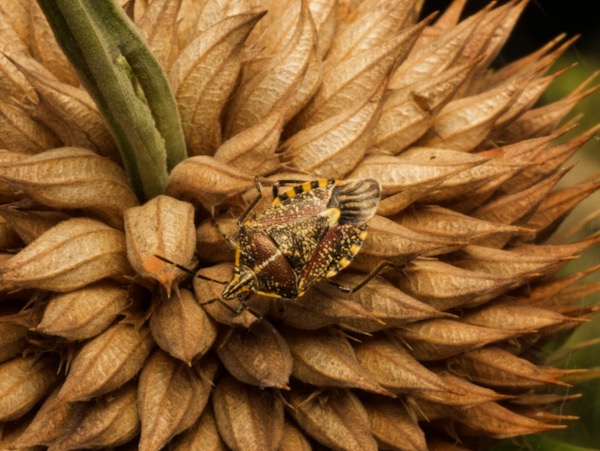
Sunflower Seed Bug, Agonoscelis versicoloratus, on interesting but unidentified plant

Antilochus distanti
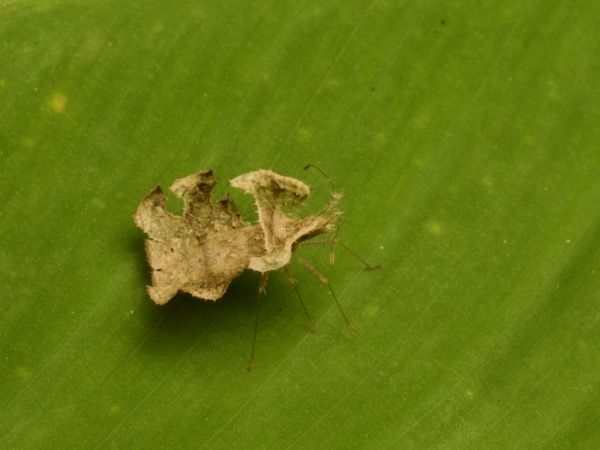
Tongorma madagascariense
The nymphs of most leaf-footed bugs (family Coreidae) look like miniature adults with undeveloped wings. Not so with this species!
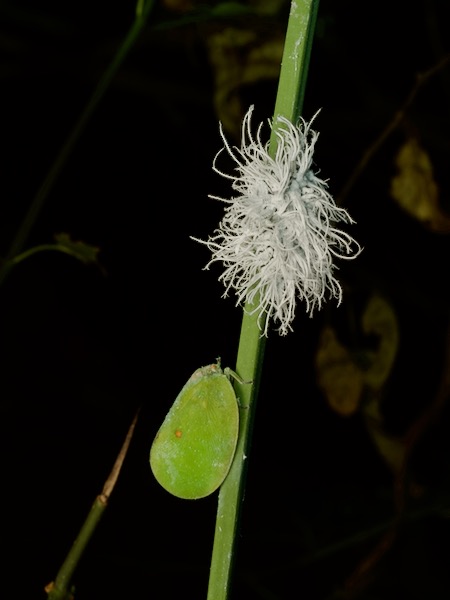
Flatid Leaf Bugs, Flatida rosea, adult and nymphs
Here's another insect where the nymphs looks nothing like the adults. To be fair, the nymphs don't really look like anything else, except maybe some crazy fungus.
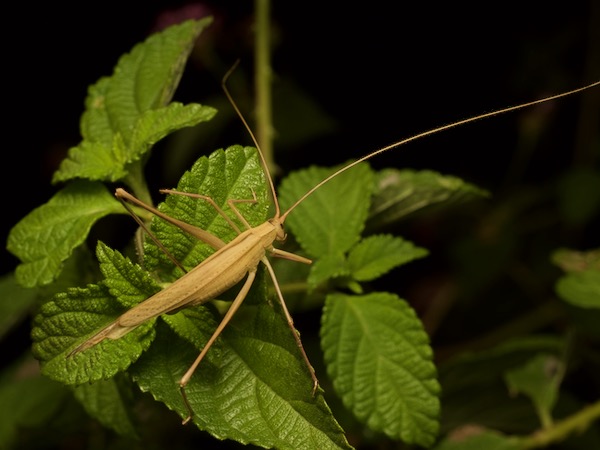
Striped Grass Katydid, Tylopsis bilineolata
We saw many different katydid species in Anja and elsewhere on our trip. This was one of the few that was distinctive enough for me to identify.
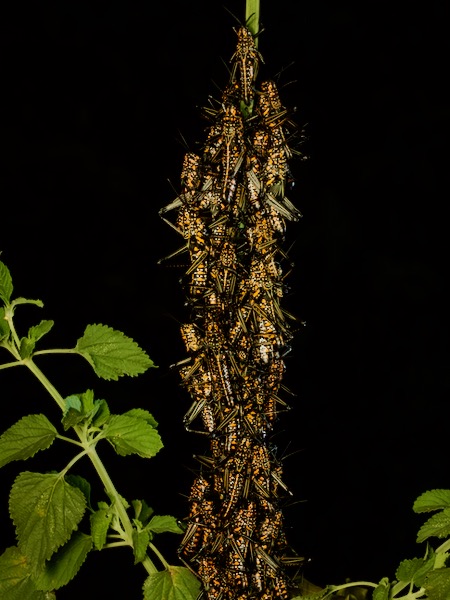
Rainbow Milkweed Locusts, Phymateus saxosus
The bright colors of these grasshoppers tell predators to stay away; the hoppers are made toxic by their milkweed diet. (The same is true for Monarch butterflies.) The adult grasshoppers are even more colorful, but at this time of year we only saw nymphs.
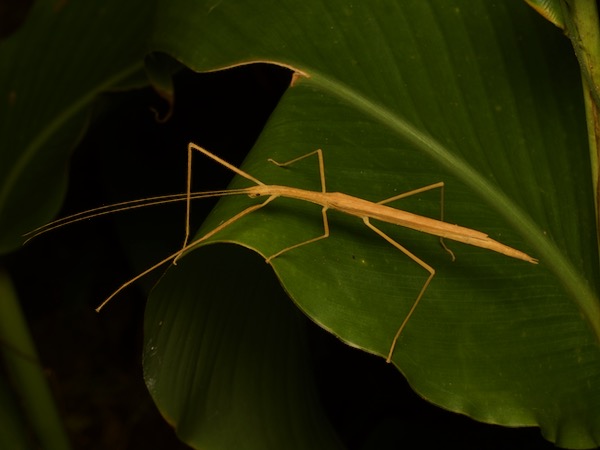
Pink-winged Stick Insect, Sipyloidea sipylus
A perfectly serviceable stick insect. Nothing special, but all stick insects are worthwhile.
Scarcer Ghost Mantis, Phyllocrania illudens
José spotted this fantastic mantis while we were (successfully) trying to prevent a snake from climbing up out of our view. The snake was cool, but this little alien/plant hybrid was way cooler. I took more photos of this mantis than of any other animal we saw in Madagascar.

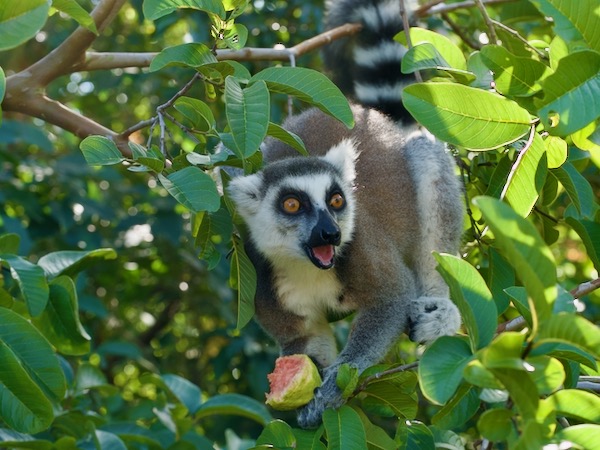
Ring-tailed Lemur, Lemur catta
We watched a troop of the reserve's most famous attractions for a while. They were cute, but they were no Scarcer Ghost Mantises.

Mascarene Ridged Frog, Ptychadena mascarensis
We only saw four frog species in this small highland forest fragment, though a few more are probably present. This widespread species can be found almost anywhere on the island that has stagnant water.
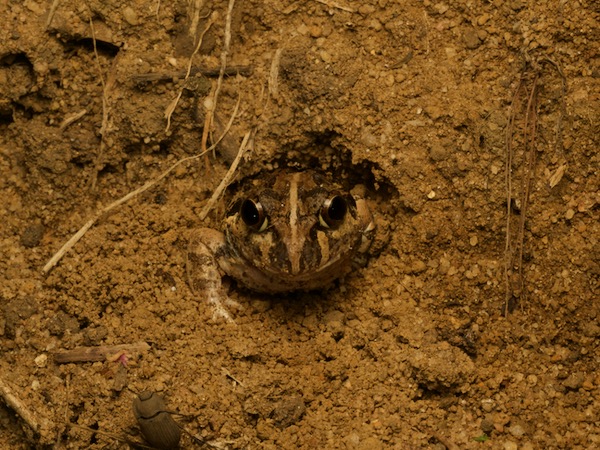
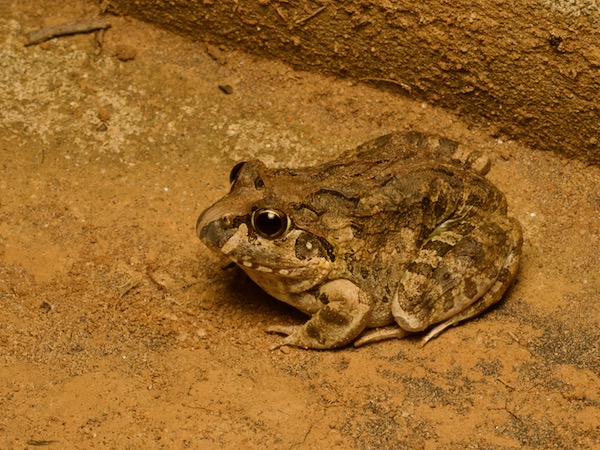
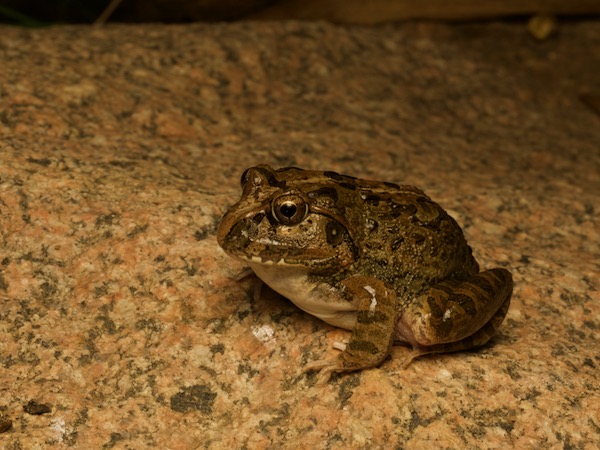
Madagascar Bullfrog, Laliostoma labrosum
These are among the goofiest-looking of Madagascar's many, many frog species. I'm not sure why someone pinned the name "bullfrog" on them, as they have very little in common with the now-unfortunately-cosmopolitan American Bullfrog and very much in common with a typical toad.
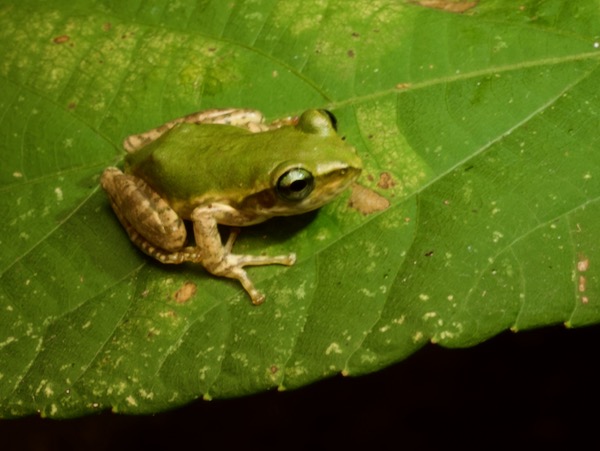
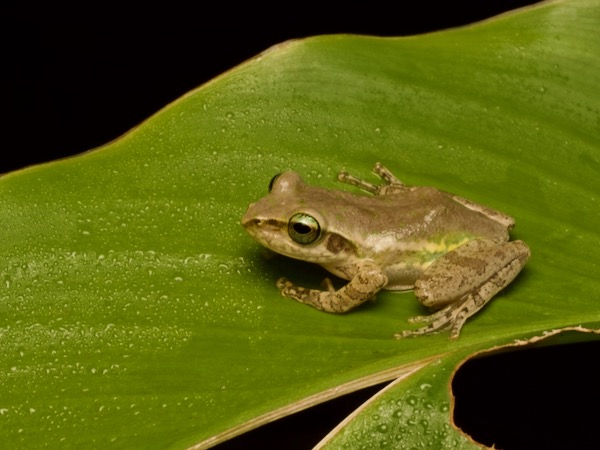


Dumeril's Bright-eyed Frog, Boophis tephraeomystax
B. tephraeomystax is a medium-sized, rather standard treefrog. Adults are generally brown, whereas juveniles are typically at least partly green.
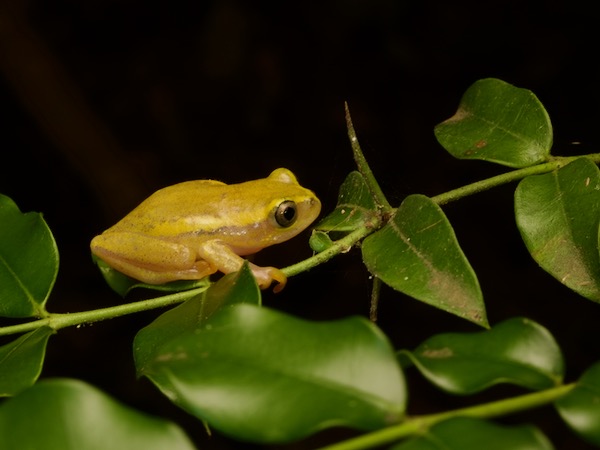
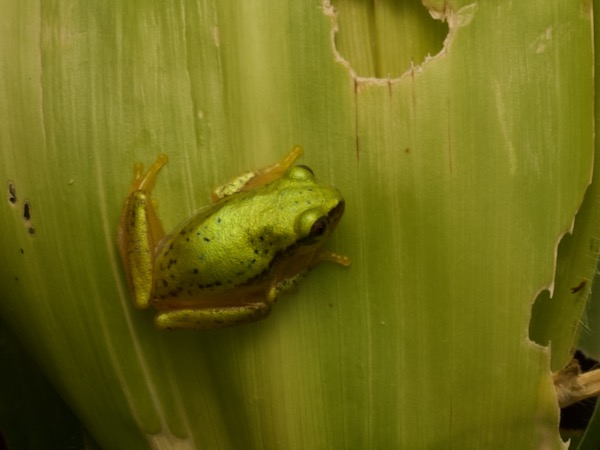
Betsileo Reed Frog, Heterixalus betsileo
These tend to be mostly yellow at night, but often shiny metallic green by day.
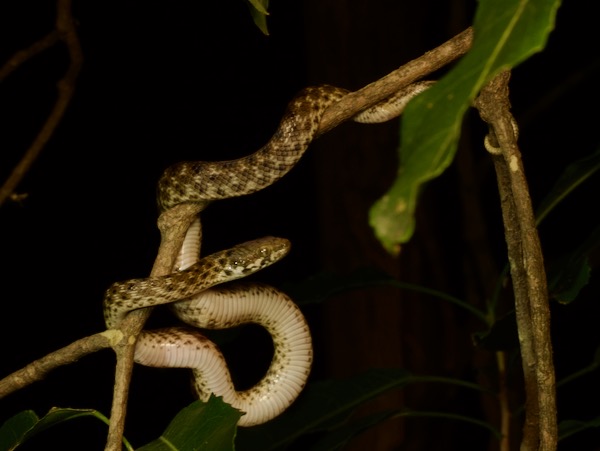
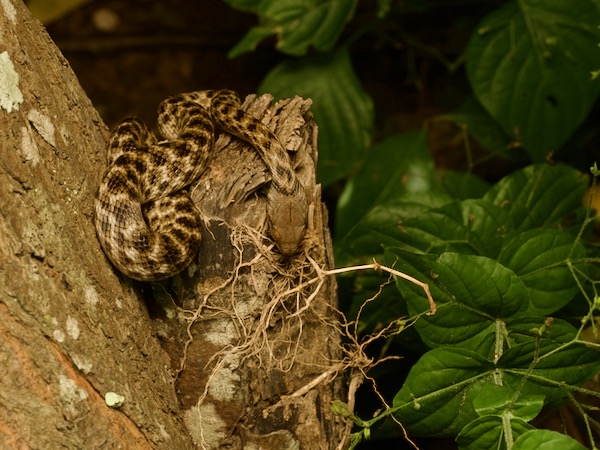

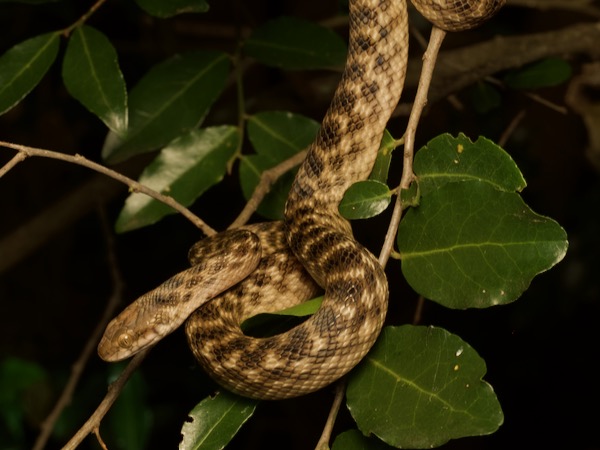
Common Madagascar Cat Snake, Madagascarophis colubrinus
This was the default snake of our trip. If you saw a snake, and didn't make a fuss about what kind of snake it was, it was this kind of snake.

Tree Wolf Snake, either Lycodryas guentheri or Lycodryas granuliceps
At first glance I thought this was another default snake, Madagascarophis colubrinus. But at second glance I realized it had a noticeably different pattern and somewhat different shape. I thought I had taken photos that were good enough to identify the species, but Madagascar herp expert Dr. Mark Scherz told us that the only way to tell whether this is Lycodryas guentheri or Lycodryas granuliceps is to count the ventral (belly) scales. We had not done so, so we will probably never know.

Tree Boa, either Sanzinia madagascariensis or Sanzinia volontany
Here's another species-A-or-species-B snake. Wunssaponatime there was only one species of Madagascar Tree Boa, named Sanzinia madagascariensis. Later two subspecies were recognized, S. m. madagascariensis and S. m. volontany. Later still the people who decide these things decided that S. volontany was sufficiently distinct to be considered a separate species. This young one seems colored more like a typical S. volontany, but the location in Anja is closer to the standard range of S. madagascariensis, so I remain uncertain. I hope that it is S. volontany because I haven't seen that species before. Perhaps some Sanzinia expert will weigh in some day on iNaturalist.

Striped Brook Snake, Pseudoxyrhopus quinquelineatus
This excellent snake was hanging out in a rice paddy at the edge of the forest. It isn't seen very often and not too much is known about its lifestyle.
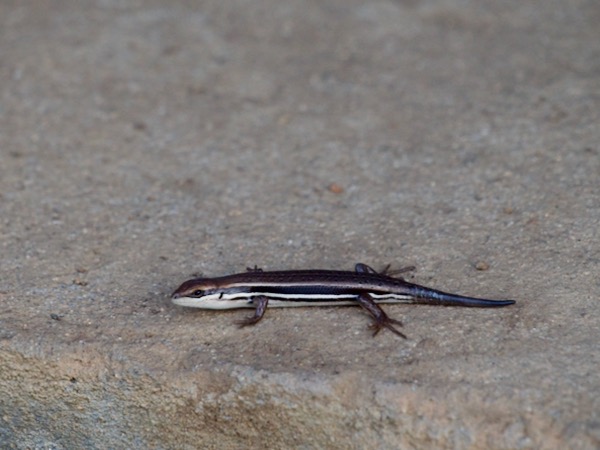
Gravenhorst's Mabuya, Trachylepis gravenhorstii
I had hoped that this skink would be one of the lesser-seen Trachylepis species instead of the most commonly seen one. But it seems I was overoptimistic.

Western Girdled Lizard, Zonosaurus laticaudatus
These lizards are pretty impressive as adults, but on this trip I didn't get any photos of adults. Juveniles like this one are easily mistaken for skinks as they scuttle through the leaf litter.
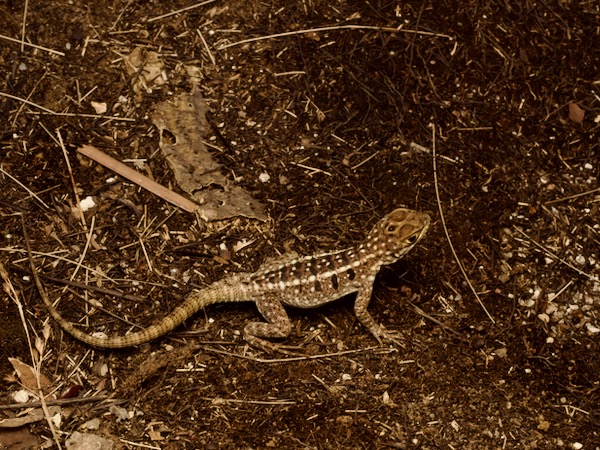
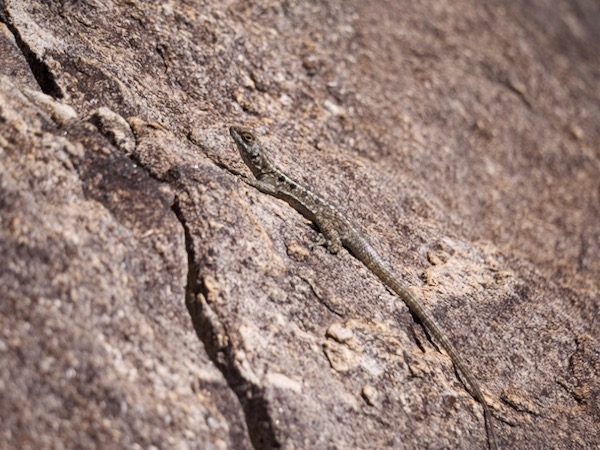
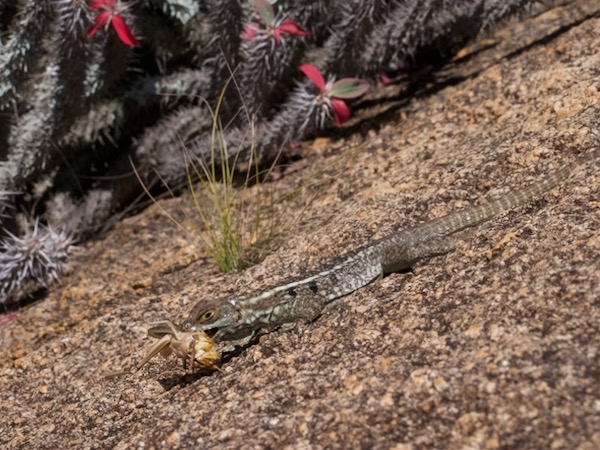
Dumeril's Madagascar Swift, Oplurus quadrimaculatus
The huge granite surfaces at Anja sport at least two species of agile Oplurus lizards. This species is more of a generalist, found in rocky formations but also on loamy soils.
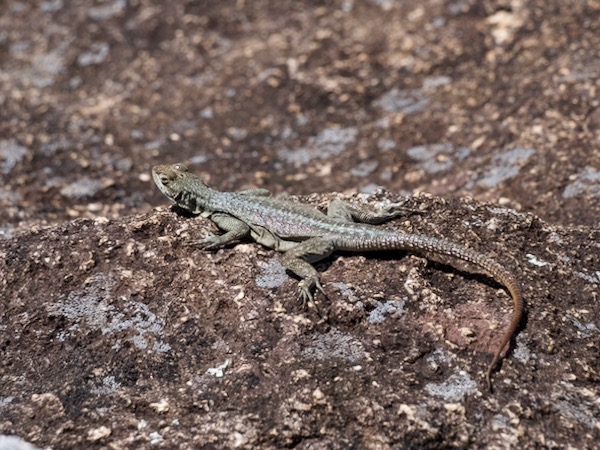
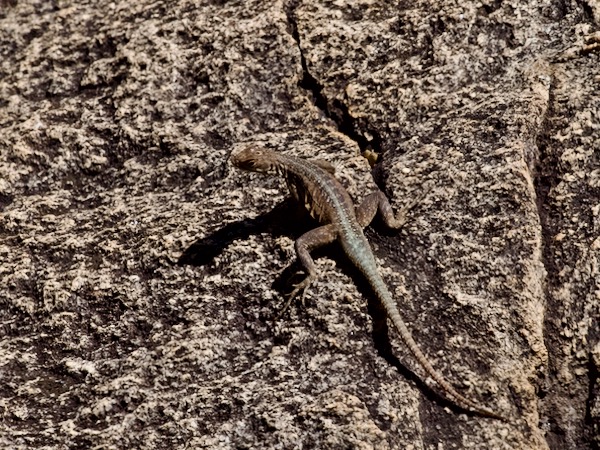
Grandidier's Madagascar Swift, Oplurus grandidieri
This species is more specifically adapted for life on the rocky outcrops, and is only known from this type of habitat. It is flatter and thus better at squeezing into narrow crevices. Another rock-dwelling Oplurus species, Oplurus saxicola, is very similar and also has a few observations from Anja on iNaturalist, but I suspect these are misidentified O. grandidieri.
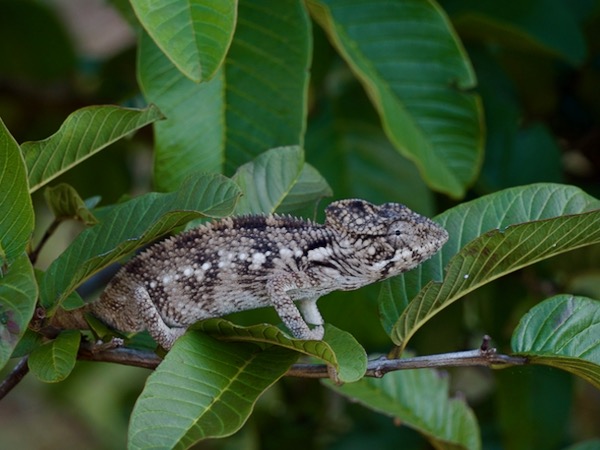



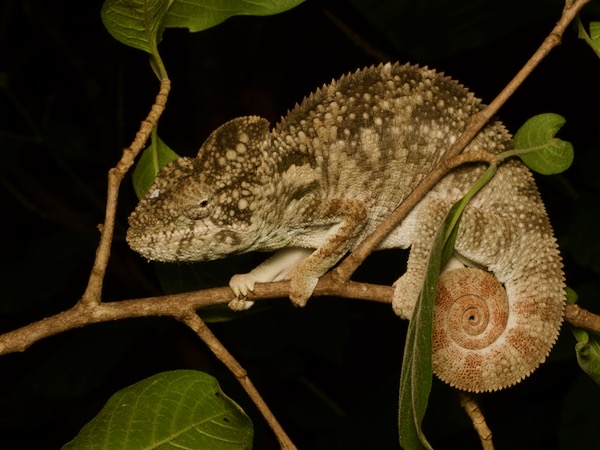
Oustalet's Giant Chameleon, Furcifer oustaleti
This species is one of the most widespread and common chameleons in the country, but they aren't particularly successful in the rainforest habitat in which we had spent most of our time, so we had only seen a couple of individuals before arriving at Anja. Here they were plentiful. As with most chameleons, they were easier to find at night, and we encountered quite a few sleeping in the forest. We also found a few on the move during the day. This was the only arboreal chameleon species we saw at Anja; when I was here in 2007 I saw a number of Furcifer lateralis in a short time, but no such luck on this trip.

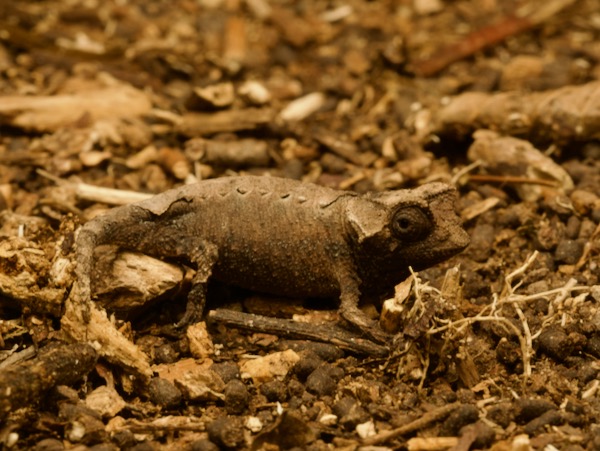
Anja Reserve Leaf Chameleon, Brookesia brunoi
With their combination of very small size, near-perfect camouflage, and almost complete lack of motion, these little leaf-litter dwellers are extremely hard to notice. The local guides found two of them for us after more than three hours (!) of searching. This species is known only from Anja, and had yet to be described when I visited in 2007. (I did see one back then, but was puzzled about its identify until a few years later when I read the journal article that named and described it.)
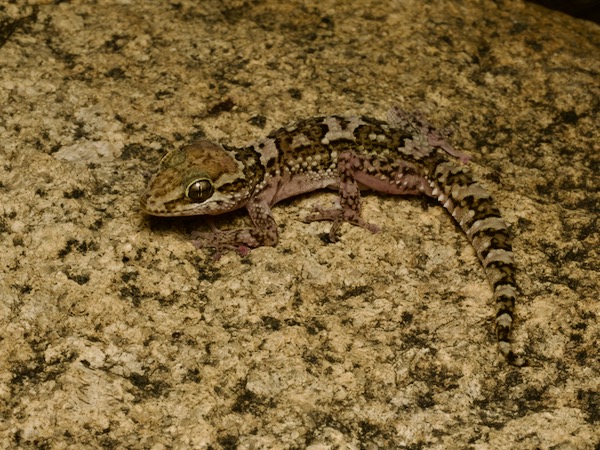
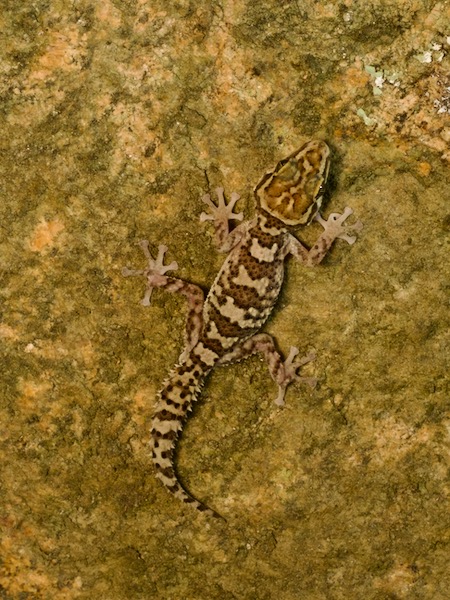
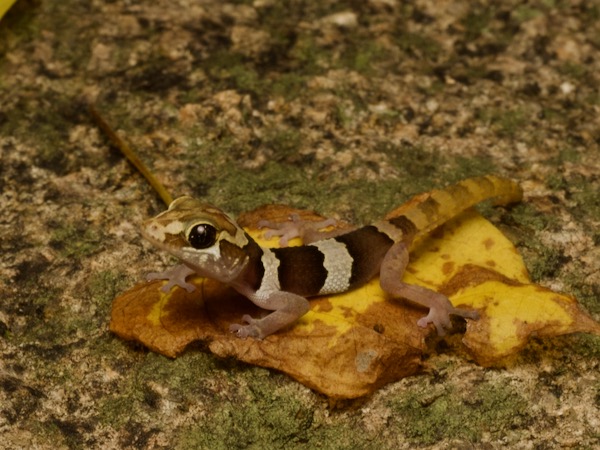
Kirindy Leaf-toed Gecko, Paroedura rennerae
We were hoping to see two rock-dwelling gecko species at Anja, Paroedura rennerae and Paragehyra felicitae. On our first of two nights, José found both within five minutes of reaching our first big hunk of granite. We saw many more of both, including the adorable baby above, also found by José. Did I mention that José is good at finding herps?
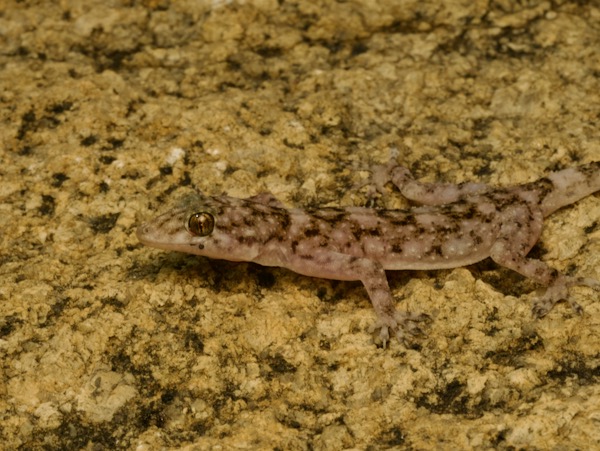
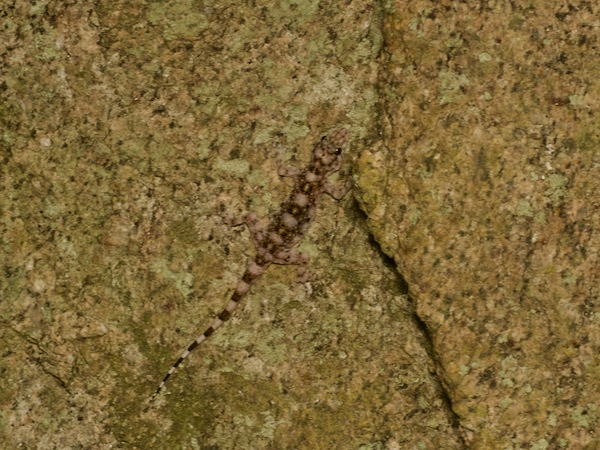

Anja Half-padded Gecko, Paragehyra felicitae
As I just mentioned, this is the other rock-dwelling gecko species at Anja that we had no trouble finding. This species is known only from Anja. We saw at least half a dozen of these scuttling about on the rock walls.



Anja Day Gecko, Phelsuma gouldi
As foreshadowed earlier on this page, here is the third lizard species we saw that is known only from Anja. José found the first of these on a granite wall at night, which is not where one expects to find an arboreal day gecko. The others were sensibly positioned on branches and tree trunks.
Next: Isalo
